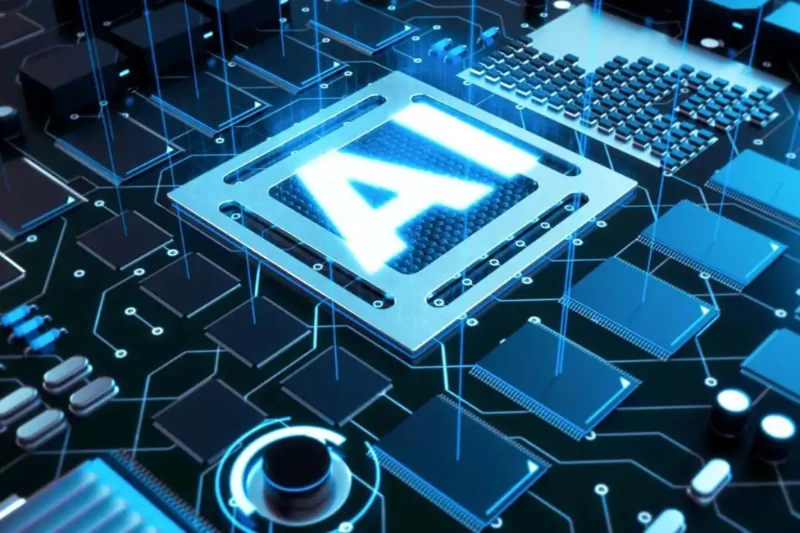Every ChatGPT response and Midjourney image starts here – but 73% of AI engineers can’t explain how their GPU actually works. These powerful chips are the unsung heroes behind today’s AI revolution. At WhaleFlux, we manage thousands of GPUs daily for AI companies. Understanding how they work helps enterprises unlock their true potential while saving costs.
How a GPU Works: More Than Just Graphics
Think of your computer’s brain as having two specialists:
- The CPU (Central Processing Unit): Like a skilled chef handling complex recipes one step at a time. Great for tasks requiring quick decisions (8-64 cores).
- The GPU (Graphics Processing Unit): Like an army of line cooks working simultaneously. Perfect for repetitive tasks like rendering graphics or crunching AI numbers (thousands of simple cores).
Why GPUs dominate AI?
Imagine multiplying 10,000 numbers together:
- A CPU might solve them one-by-one
- A GPU solves all 10,000 at once
This “parallel processing” explains why GPUs accelerate AI matrix math up to 100x faster than CPUs.
From Gaming to AI:
- 1999: NVIDIA GeForce 256 rendered triangles for games
- 2024: H100 Tensor Cores deliver 1,979 trillion math operations/sec for AI
WhaleFlux Hardware Spotlight:
*”Our NVIDIA H200s feature 141GB HBM3e memory – moving model weights at 4.8TB/second to feed 20,000+ cores simultaneously. That’s like transferring 1,000 HD movies in one second!”*
4 Critical GPU Components Explained
| Component | What It Does | Why It Matters for AI |
| Stream Processors | Mini-calculators in parallel | Determines your LLM training speed |
| VRAM | Stores model weights/data | Limits model size (70B+ Llama needs 140GB+) |
| Tensor Cores | Special circuits for matrix math | Makes transformer training 6x faster |
| Memory Bandwidth | Data highway speed | Prevents “traffic jams” to GPU cores |
WhaleFlux Tip:
*”Match GPUs to your workload:
- RTX 4090 (24GB) for fine-tuning <13B models
- H200 (141GB) for 100B+ training clusters”*
How to Check if Your GPU is Working Properly
Follow this simple health checklist:
➊ Performance Monitoring
- Tools:
nvtop(Linux) ornvidia-smi(Windows) - Warning signs:
VRAM usage >90% (add more memory)
GPU utilization <70% (fix bottlenecks)
➋ Thermal Validation
- Safe range: 60°C-85°C under load
- Critical: >95°C causes slowdowns (“thermal throttling”)
➌ Stability Testing
- Tools: FurMark or CUDA-Z
- Red flag: Frequent crashes during math operations
WhaleFlux Advantage:
“Our dashboard auto-detects problems – from memory leaks to overheating – across your entire GPU cluster. No more manual checks!”
When DIY GPU Management Fails
Scaling from 1 to 8+ GPUs introduces three big headaches:
- Network bottlenecks: Data gets stuck between GPUs
- Load imbalance: One slow GPU slows the whole team
- Fragmented monitoring: Different tools for each machine
This is why enterprise AI teams choose WhaleFlux:
python
# WhaleFlux API configures clusters in one command
cluster.configure(
gpu_type="H100", # NVIDIA's flagship AI GPU
topology="hybrid-mesh", # Optimized connections
failure_tolerance=2 # Backup for reliability
)
*Real result: 92% cluster utilization vs. typical 40-60%*
GPU Selection Guide: Match Hardware to Your AI Workload
| Your Workload | Ideal GPU | WhaleFlux Monthly Lease |
| LLM Inference (7B-13B) | RTX 4090 (24GB) | $1,600 |
| LLM Training (30B-70B) | NVIDIA A100 (80GB) | $4,200 |
| 100B+ Model Training | NVIDIA H200 (141GB) | $6,800 |
*Note: All WhaleFlux leases are 1-month minimum – no hourly billing surprises.*
Conclusion: Treat Your GPUs Like Formula 1 Engines
Maximizing GPU performance requires both mechanical understanding and professional tuning. Just as race teams have pit crews, AI teams need expert management.
WhaleFlux Value Proposition:
*”We maintain your AI infrastructure so you focus on models – not memory errors. From single RTX 4090s to 100+ GPU H200 clusters, we ensure peak performance while cutting cloud costs by up to 60%.”*

